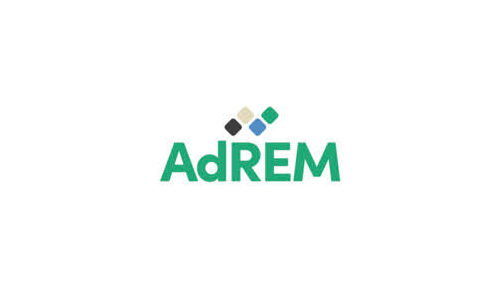

The constant development of renewable energy in Poland is a fact. This is due to new trends in the energy sector, as well as the needs of the state. Regulations and administration practices regarding new and existing investments are changing. This requires investors to have a good understanding of the legal area, which also affects economic projections. It is worth paying attention to tax issues, because they often determine the decision to start an investment and its form.
Polish Holding Company
When creating a tax-efficient structure for renewable-energy investments in Poland, investors often use the so-called Polish Holding Company (PHC). Regulations in this regard were introduced in 2022 and amended this year. They offers substantial CIT exemptions:
- Dividend Tax Exemption – from 1 January 2023, dividends received by a PHC from Polish or foreign subsidiaries are fully CIT-exempt. This exemption covers subsidiaries seated in the EU, EEA, Switzerland, or beyond.
- Capital Gains Tax Exemption – profits from selling shares in Polish or foreign subsidiaries to non-related parties are exempt from the usual 19% CIT on capital gains.
To qualify for these exemptions, PHCs and their subsidiaries must meet specific criteria. Amendments in 2023 aim to expand accessibility by allowing PHCs to form as Polish simple joint-stock companies and enabling subsidiaries to hold more than 5% of shares in other entities. Moreover, subsidiaries can benefit from CIT exemptions in special economic or Polish investment zones.
The PHC and the subsidiary must meet these conditions for an uninterrupted two-year period preceding the receipt of exempt dividends or share sale. Limitations apply, such as the non-application of CIT exemptions, if a foreign subsidiary qualifies as a controlled foreign corporation or if the subsidiary’s assets primarily consist of real estate in Poland.
PHCs in Poland offer additional advantages, including lower establishment and operational costs compared to other EU countries. They provide a safer option for the investors with fewer tax-related issues. Overall, these amendments aim to make PHCs more accessible and beneficial for investors, fostering a favourable environment for holding companies in Poland. However, it is important to highlight the significant drawbacks and risks associated with the PHC. In order to be able to apply the exemptions, a PHC should conduct a genuine business activity. In the case of holding companies, the practice of the tax authorities and the courts is not clear in this respect. A PHC should not have a shareholder (direct or indirect) with its seat/registered office in a tax heaven. This applies even if there are public companies in the structure not having full information about their stockholders, therefore the adoption of PHC by some investors may not be possible. This issue has been already recognised by the courts – the first favourable judgment indicated that taxpayers cannot be imposed with obligations that cannot be met. We hope that a favourable line will be formed in this respect, as many institutional investors, are in a worse position because of this.
Real estate tax
Tax is subject to land and structures. Real estate tax (RET) collected by municipalities, and is a key source of their own income. Practices regarding this tax may vary between municipalities. Taxpayers are primarily the owners. If the investment is carried out on leased land, the taxpayer will generally be the lessor, not the investor (lessee). In such cases, the standard is that the tenant is charged the tax paid by the owner. The investment causes business rates to apply, which amount around one złoty per square metre. In practice, these rates apply to entire plots of land that are leased, even if the investment covers only a part of them. The appropriate wording of the lease agreement as well as the content of the application for a building permit may provide room for a favourable interpretation in the field of RET. A more significant burden is the tax on structures, which amounts to 2% of their value per year. Generally, only the construction parts of the installation are subject to taxation. In the case of wind farms, these are the foundations and the towers. And in relation to photovoltaic farms, these are primarily metal constructions. PV farms have a weaker legal basis than wind farms, which is why some municipalities also seek to tax PV panels. Independently, accompanying infrastructure, especially underground cables, may also be subject to tax. The use of cable ducts can significantly reduce the tax burden.
Cost segregation
The optimal solution is detailed settlement of the investment into fixed assets based on technical specifications. This has a RET compliance purpose. The initial value of fixed assets should constitute a direct reference point for the purposes of the RET tax base. This allows investors to avoid overstating it, and it minimises the risk of the settlements being questioned by the tax authorities. In practice, thanks to cost segregation, the RET base is most often 25%-35% of CapEx.
Another goal of cost segregation is to increase depreciation write-offs. Detailed settlement allows investors to recognise a dozen or so fixed assets from one investment. According to Polish standards, a fixed asset is not a farm or a turbine, but their specific elements. Professional settlement also guarantees better results in due diligence, because it clearly indicates the method of calculation.
In order to bring high result of cost segregations, appropriate provisions in contracts with suppliers are important. Settlement documentation must provide appropriate detail of components and their unit prices. It is worth verifying these issues at the early stages of the investment, as it may turn out to be much more difficult later.
Understanding and navigating the tax complexities in Poland’s changing renewable energy landscape is crucial for investors. The aforementioned issues such as the PHC model and real-estate tax are not the only problems – currently most international groups have difficulties with distributions of dividends and interest abroad, due to a whole host of uncertainties with withholding tax and issues (such as beneficial owner or substance). As of 2024, a minimum CIT comes into force, which in certain situations may result in the taxation of revenues or certain costs. For these reasons, strategic analysis and planning become paramount. Taking advantage of opportunities while mitigating risks in tax structures is essential for successful ventures in the dynamic renewable-energy sector.


























